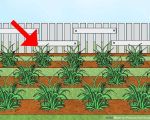How to Keep Your Lawn Healthy Without Chemicals
Maintaining a lush, green lawn is a goal for many homeowners, but the idea of using harsh chemicals to achieve that perfect yard can be off-putting. With increasing awareness of environmental issues and health concerns, many people are opting for natural and chemical-free alternatives to care for their lawns. As someone who values the beauty of a healthy, green lawn but also cares about the environment, I’ve explored several strategies for maintaining a thriving lawn without relying on chemical treatments.
1. The Benefits of Chemical-Free Lawn Care
The first step in transitioning to a chemical-free lawn care routine is understanding the benefits of going natural. The use of chemicals like synthetic fertilizers, pesticides, and herbicides has been linked to soil degradation, water contamination, and negative impacts on local wildlife. By avoiding these substances, you're not only protecting the environment but also creating a safer space for children, pets, and beneficial insects like bees and butterflies.
In addition to being eco-friendly, chemical-free lawns can be healthier in the long run. Natural lawn care practices promote soil health, encouraging stronger root systems and a more resilient lawn that can better withstand droughts, pests, and disease. A lawn that thrives without chemicals is often more sustainable, requiring less frequent maintenance and less water.
2. Best Practices for Organic Lawn Care
Now that you know the benefits, let’s dive into some practical methods for keeping your lawn healthy without chemicals.
2.1. Proper Mowing Techniques
Proper mowing is essential for maintaining a healthy lawn. One of the most common mistakes people make is cutting their grass too short. Cutting your lawn too short stresses the grass and makes it more susceptible to weeds and diseases. Instead, aim to mow at the highest recommended height for your grass type. This helps the grass develop deeper roots and shades the soil, reducing the growth of weeds.
2.2. Aeration for Healthier Roots
One of the best ways to promote a healthy lawn without chemicals is by aerating your soil. Aeration involves perforating the soil with small holes to allow air, water, and nutrients to penetrate deeper into the ground. This encourages the growth of strong, deep roots and improves the overall health of the lawn. You can rent an aerator from your local hardware store or hire a professional to do the job.
2.3. Natural Fertilizers
While synthetic fertilizers can provide a quick nutrient boost to your lawn, they can also harm the environment in the long run. Instead, consider using natural fertilizers like compost, grass clippings, or organic matter. These materials release nutrients slowly, improving soil structure and enhancing the microbial activity that is vital for a healthy lawn.
2.4. Weed Control Without Chemicals
Weeds are a common issue for many homeowners, but chemical herbicides are not the only solution. One of the best ways to prevent weeds is to keep your lawn healthy and dense. A thick, well-maintained lawn crowds out weeds and prevents them from taking root. If you do need to remove weeds, consider using natural methods like pulling them by hand or using a vinegar solution for spot treatment.
2.5. Organic Pest Control
For pest control, it’s essential to adopt a more natural approach. Instead of using toxic pesticides, try introducing beneficial insects like ladybugs, which feed on harmful pests like aphids. You can also create a habitat for natural predators like birds and frogs, which help maintain a balance in your lawn’s ecosystem.
3. Watering Practices for a Chemical-Free Lawn
Proper watering is another essential aspect of chemical-free lawn care. Over-watering can promote the growth of fungal diseases and cause nutrient leaching, while under-watering stresses the grass. The key is to water deeply but infrequently, ensuring that the roots have enough moisture to thrive. Early morning is the best time to water, as it reduces evaporation and allows the grass to dry before evening.
4. Additional Tips for Lawn Care Without Chemicals
In addition to the practices mentioned above, there are a few more tips that can help you maintain a beautiful, healthy lawn without resorting to chemicals:
- Mulch grass clippings: After mowing, leave the clippings on the lawn. This natural mulch adds valuable nutrients to the soil and helps retain moisture.
- Choose the right grass species: Different types of grass thrive in different climates. Make sure to choose a variety that suits your region to ensure your lawn is naturally resilient.
- Consider companion planting: Planting certain flowers and herbs around your lawn, like lavender or marigolds, can naturally repel pests.
In my experience, the shift towards chemical-free lawn care has not only improved the health of my lawn but also given me peace of mind knowing I’m making choices that are good for the environment. It’s a fulfilling process that involves a little more time and effort but results in a beautiful, sustainable lawn that I can enjoy without guilt.
If you’re interested in learning more about how to keep your lawn healthy without chemicals, or if you want to explore professional lawn care services that specialize in eco-friendly solutions, feel free to visit Lawn Care Services for the best products and recommendations.








